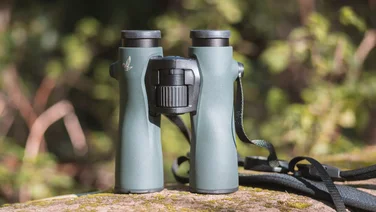To help us provide you with free impartial advice, we may earn a commission if you buy through links on our site. Learn more

- Class-leading image and video quality
- Solid performance
- Competitive price
- Controls are relatively basic
- Bluetooth transfers could be more reliable
Nikon’s D3400 is still one of our favourite entry-level DSLRs, offering superb image quality, portability and excellent battery life. However, since it was succeeded by the D3500 in 2018, you’d be justified in thinking it makes sense to pick up the newer model.
In truth, there’s not a huge amount that’s different about the cameras, but the D3500 delivers better battery life (1550 vs 1200 shots) and is 80g lighter than its stablemate. It also has a newly developed sensor, although the sensor size and resolution remain the same. Overall, then, it probably does make sense to buy the newer model, but if you can find a good used example of D3400, it remains an excellent camera and one that’s pretty much unbeatable at its price.
The original review continues below
Digital SLR is a relatively mature technology, so finding something new and exciting to put into entry-level models isn’t easy. It’s debatable whether Nikon has risen to this challenge with the D3400. In appearance there’s very little to tell the D3400 apart from the Nikon D3300; it even has the same physical measurements, although it has shed 15g of weight.
There’s a new kit lens with a stepping motor for smoother focussing during video capture, plus Bluetooth for wireless transfers. Battery life is up from 700 to 1,200 shots, which an impressive achievement considering it’s the same battery as before. This could be because the updated sensor is more energy-efficient, but it might just be because the flash range has dropped from 12m to 7m. That’s more than a third down on the power of the D3300’s flash.
Nikon has also done away with the D3300’s microphone socket, and there’s no longer an ultrasonic cleaning function that shakes dust from the sensor. I doubt many people will miss the microphone socket, as without a headphone socket to monitor the results it isn’t a whole lot of use. Keen videographers are better off using a separate audio recorder and syncing the video and audio files in editing software. The lack of ultrasonic cleaning is more worrying but it’s not something I can test objectively. If you only ever use the kit lens you’ll have no need to remove it, so the sensor should never get dusty.
Nikon D3400 review: Wireless and performance
The Nikon D3300 lacked Wi-Fi for wireless transfers to smartphones and tablets, which is a shame as it’s likely to be quite a popular feature for consumers to the click-and-share convenience of a smartphone. As such, it’s good to see wireless transfers included on the D3400. There’s no Wi-Fi, though; it’s all handled via Bluetooth.
Bluetooth consumes less power than Wi-Fi and this allows the camera to maintain a permanent connection and transfer all photos (or 2-megapixel copies) rather than simply transferring on demand. There’s also an option to continue with transfers while the camera is switched off. There’s no wireless remote control function, though.

The wireless facility worked well in my tests – at least at the start – with photos appearing on my Android phone shortly after capture. The SnapBridge app was also able to use the phone’s GPS radio to geotag photos, both on the transferred copies and the originals still in the camera. Various Wi-Fi cameras offer this function but it’s not normally this effortless.
However, after successfully transferring 200 photos, both camera and app ceased all communication and it took a lot of poking around both devices’ settings to get them talking again. User reviews on the iTunes and Google Play stores suggest such experiences are quite common. I also found that selecting the Send While Off option caused the camera’s battery to run down when not in use.
Other aspects of the D3400’s design and performance are in line with the D3300, but that’s no bad thing. It was consistently fast to focus when using the viewfinder and managed a shot every 0.4 seconds in normal use.
Continuous shooting lived up to the claimed 5fps speed and lasted 21 JPEGs or nine RAW exposures before slowing to the speed of the card. Autofocus in live view mode was impressively fast, too, but there was a two-second delay before the camera was ready to take another shot. Live view is unavailable in continuous drive mode.
Nikon D3400 review: Controls
The physical controls are relatively simple for an SLR but you do get dedicated buttons for exposure compensation and drive mode, plus a customisable Fn button that accesses ISO sensitivity by default, while pressing the “i” button provides quick access to 12 commonly used settings.
There are a few annoying quirks common to previous Nikon SLRs, including how its Auto ISO mode is only available via a submenu, and how the self-timer resets after each exposure. The new kit lens has no switches on its barrel either, so selecting manual focus requires a trip to the menu as well.
Subject tracking autofocus is available but with just 11 autofocus points in fixed locations, it isn’t terribly effective. Pricier SLRs with more autofocus points let you focus precisely on your subject’s eyes, for example, whereas with this camera you may have to line up the subject’s eye with an autofocus point, half press the shutter button and then reframe the composition to your liking before taking a shot. This isn’t too arduous but a potential reason you might consider paying more.

Nikon D3400 review: Video and photo quality
The D3300’s video mode was mostly excellent but autofocus was a little clunky and the soundtrack was spoiled by robotic whirrs from the autofocus motor. The D3400 is much better, with decisive adjustments that were barely audible in the soundtrack.
It doesn’t focus continuously during capture, and instead only updates focus when the shutter button is half-pressed. That may lead to subjects drifting out of focus, but I like being able to keep focus fixed and only update it on demand.
Video autofocus wasn’t perfect in my tests, with a tendency to overshoot slightly and then correct itself. The Canon EOS 750D is a better option for video capture but the D3400 easily outperforms the EOS 1300D in this respect. As with previous Nikon SLRs, details were crisp and colours exhibited the same flattering tones as the camera’s JPEG photo output.
Photo quality is a significant step up from the Canon EOS 1300D, too. Its 24-megapixel sensor captured sharper details than the Canon’s 18-megapixel sensor and it also exhibited much less noise at ISO 3200 and above. The D3400 showed a small but welcome improvement in noise levels compared to the D3300, evident both in JPEGs and unprocessed RAW files. Colour rendition was up to Nikon’s usual high standards, and the kit lens did a respectable job of delivering sharp focus across the frame at various focal lengths.
Nikon D3400 review: Image quality

^ This wide-angle shot has lots of fine detail without looking over-processed and shadows and highlights are both handled well. Focus is a little soft at the edges but it’s a minor issue. (1/160s, f/6.3, ISO 100, 27mm equivalent)

^ The long end of the zoom is even better, with crisp focus picking out lots of detail in the dense undergrowth. (1/160s, f/6.3, ISO 100, 82mm equivalent)

^ Backlit trees are a tough test for chromatic aberrations but there are no signs of problems here. (1/200s, f/7.1, ISO 100, 52mm equivalent)

^ Skin tones are handled well but autofocus isn’t quite pin-sharp on the face. This is probably down to the location of the autofocus point used. (1/50s, f/5.6, ISO 100, 82mm equivalent)

^ ISO 800 produces clean skin, hair and fabric textures with lots of fine detail. (1/30s, f/3.5, ISO 800, 27mm equivalent)

^ Image quality is holding up well at ISO 2000. Shaded skin tones are a little grainy but this is imperceptible at normal viewing sizes. (1/50s, f/4.2, ISO 2000, 42mm equivalent)

^ Household artificial light has pushed the sensitivity up to ISO 6400. There’s quite a lot of noise but it’s good enough for social media. (1/80s, f/4.5, ISO 6400, 30mm equivalent)

^ Noise levels at fast ISO speeds are significantly lower than from the Canon EOS 1300D and a little lower than the Nikon D3300 too. (1/1250s, f/8, ISO 12800, 60mm equivalent)
Nikon D3400 vs Canon EOS 1300D and verdict
The Nikon D3400’s key rival in this space is the Canon EOS 1300D. Both are entry-level SLRs with broadly similar features. The Canon has more labelled buttons for quick access to key photographic settings, although the downside is that accessing the autofocus point requires an additional button press. The Canon’s Wi-Fi functions are preferable to Nikon’s Bluetooth implementation, too.
The Nikon D3400 hits back with a larger viewfinder (0.58x compared with the Canon’s 0.5x), a faster continuous shooting mode, superior video autofocus, better detail levels and less noise. Both cameras take attractive photos but overall the Nikon D3400 is the clear victor here.
The D3400 also has competition from compact system cameras (CSCs), but the market for sub-£500 CSCs has dried up in the last couple of years so you’ll probably have to pick up an end-of-life discounted model. Considering that the D3400 costs a mere £439 at launch, it’s a great choice for anyone who wants a proper camera but doesn’t want to spend too much.







